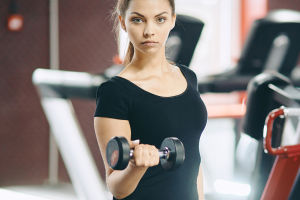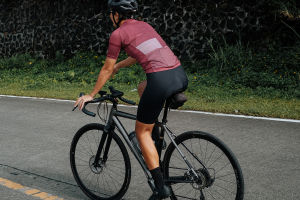When we think of American football, the intense collisions and high-speed action always come to mind. It’s a tough sport where players push their bodies to the limit. Because the game involves hard hits and fast crashes, protecting the head is absolutely crucial.
The helmet is not just a piece of gear—it’s the core of a player's safety and career longevity. Without reliable helmets, injuries would be much more common, and the game wouldn’t be as thrilling or safe.
Helmet Shell: The First Line of Defense
The modern football helmet began its journey back in 1939 when the Riddell company in Chicago introduced the first plastic helmet. This was a game changer because it was lighter and stronger than the old leather helmets. Today, most helmets use a strong but lightweight material called polycarbonate alloy. This plastic is shaped through a high-heat process to make the shell tough enough to handle impacts, but light enough so players can move freely.
Internal Protection System: Cushioning Every Strike
Inside the helmet is where most of the magic happens. Starting in the 1970s, helmets began featuring internal protective liners known as “Protective Air Liners.” These are made from foam that is die-cut into shapes and filled with air pockets. This system cushions the head from impacts by absorbing shocks and spreading the force out. What’s cool is that players can even adjust the air pressure inside these liners to fit their heads comfortably, making the helmet both protective and snug.
Jaw Pads: Locking In Safety
A lesser-known but very important part is the jaw pad. This piece fits inside the helmet under the ear, securing the lower face and jaw. Because everyone’s face shape is different, jaw pads come in various sizes and thicknesses. Finding the right one is a bit like trying on clothes—you want the perfect fit for safety and comfort. These pads help keep the helmet locked in place so it won’t shift during a hit.
Face Mask: Style Meets Safety
The face mask is often the most noticeable part of a helmet. It not only protects the face but also shows off a player’s style. Face masks come in different materials, mainly carbon steel, stainless steel, and titanium. Titanium masks weigh about 60% less than carbon steel but cost 3 to 4 times more. Players choose based on their position and budget, balancing weight and protection.
Wide receivers and quarterbacks prefer masks with bigger eye openings for clear vision, while linebackers and running backs choose smaller openings to protect their eyes during heavy collisions. Defensive linemen wear masks that are longer vertically to protect their jaws from hits coming from below.
Chin Straps: Holding It All Together
The chin strap is another key part that keeps the helmet securely on the player’s head during intense movement and contact. There are three common ways to attach chin straps: single strap, low-position double strap, and high-position double strap. Some players, like quarterback Aaron Rodgers from the Green Bay Packers, prefer just a single strap. Chin straps come in soft leather and hard-shell types. Soft ones are more comfortable, but hard-shell straps provide better protection against hard hits—especially important for players in the trenches battling on the line of scrimmage.
Visors: Extra Eye Protection
Visors are optional but popular among players who want extra protection for their eyes. They can protect against glare, debris, and injuries during crashes. However, visors sometimes reduce visibility, especially in bad weather like rain or fog. The NCAA, governing college football, requires all visors to be clear to help referees and medical staff see players' eyes for safety. The NFL has relaxed these rules, allowing tinted and mirrored visors, which players love for their cool look and style. Brands like Nike, Oakley, and Under Armour offer a wide range of visor colors and designs.
Choosing the Right Helmet: What to Consider
When picking a helmet, we always put safety first, then comfort, weight, and finally price. The helmet must be certified by the NOCSAE (National Operating Committee on Standards for Athletic Equipment) to ensure it meets strict safety standards. Leading brands like Riddell, Schutt, and Xenith are trusted for their quality and protection. Comfort is personal—you have to try helmets on and adjust them until they feel just right.
For example, Riddell helmets fit narrower heads better, while Schutt offers a wider fit. Weight depends on your position and neck strength—too light may mean less protection, too heavy can tire you out during the game. Price often reflects quality; investing in a good helmet is investing in your health.
Wearing Your Helmet Properly: Details Matter
Wearing the helmet correctly is just as important as choosing the right one. The fit has to be snug, but not tight enough to cause discomfort. You have to fasten the chin strap firmly so the helmet doesn’t move during play. Also, strengthening your neck muscles through training helps support your head and reduces injury risk. Simple exercises like weighted head lifts or resistance band workouts can make a big difference.
Protect Your Head, Protect Your Game
To sum it up, our head is the most important part to protect when playing football. The helmet is the star piece of equipment that keeps us safe during all those hits. No matter how tight your budget is, never compromise on helmet safety. Always choose a helmet that meets the highest safety standards, fits well, and feels comfortable. Remember to wear it properly and build neck strength to stay protected on the field.
Hey Lykkers, what’s your experience with football helmets? Ever had to pick one that fit just right or saw how it helped during a tough game? Let’s chat and keep each other safe out there!
Why You SHOULD Wear a Football Visor
Video by FOOTBALLRS


